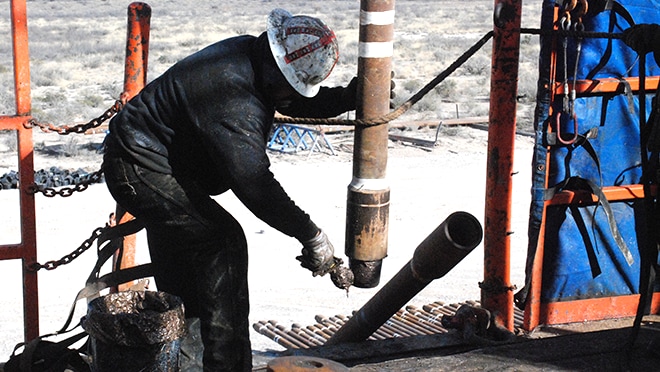Key points
- Oil and gas extraction health and safety hazards are unique and complex.
- This workforce has a higher-than-average fatal occupational injury rate.
- Learn about NIOSH research to protect oil and gas extraction workers.

Overview
The oil and gas extraction industry is made up of three main types of companies:
- Oil and gas operators develop and operate leased properties.
- Drilling companies drill oil and gas wells and perform well control activities.
- Well servicing companies provide specialized support services for existing wells.
Oil and gas extraction health and safety hazards are unique and complex. Oil and gas extraction workers are responsible for a wide range of work activities, including constructing oil and gas well sites, drilling and fracturing the wellbore, bringing fluids to the surface for transport to refineries, and providing maintenance and monitoring of well sites. The work primarily occurs outdoors in all environmental conditions, is physically demanding, and involves daily exposure to a variety of physical and chemical hazards as well as psychological stressors. Additionally, workers may experience long commutes and shift work. Due to the high-risk nature of oil and gas extraction work, this workforce has an elevated fatal occupational injury rate.
CDC’s National Institute for Occupational Safety and Health (NIOSH) includes an Oil and Gas Extraction Program conducts research, works with partners, and develops and communicates workplace solutions to improve worker safety and health in the oil and gas extraction industry.
What's being done
NIOSH partners with other organizations to encourage innovative research and improve workplace practices in the oil and gas extraction industry. NIOSH also facilitates the National Occupational Research Agenda (NORA), a partnership program to stimulate innovative research and improved workplace practices. The sector council for oil and gas extraction brings together individuals and organizations who share an interest in improving safety and health in the oil and gas industry.
- NIOSH Oil and Gas Extraction Sector Program
- NORA Oil and Gas Extraction Council
- Partnerships to Advance Research
For more information including NIOSH oil and gas extraction research and publications visit the Oil and Gas Resources page.
Videos
This video highlights safe work practices for fluid transfers from tanks to tanker trucks. Recommendations for employers and workers are consistent with the hierarchy of controls, with a focus on engineering controls, administrative controls, and the proper and consistent use of personal protective equipment (PPE).
Protecting Oil and Gas Workers from Hydrocarbon Gases and Vapors
